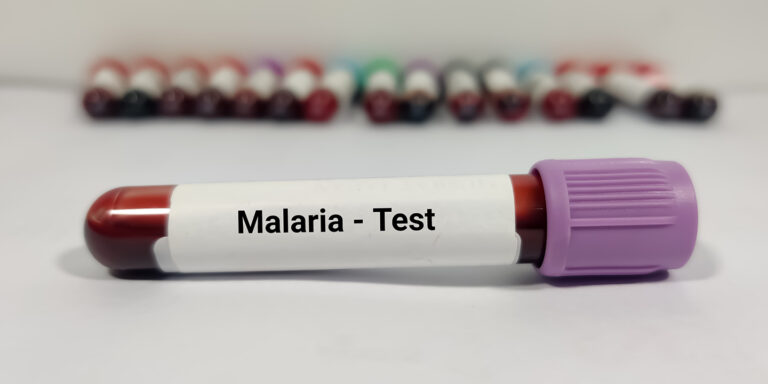Liver Function Tests: When and Why They’re Ordered
Have you ever wondered why routine blood work often includes specific screenings? Many of us overlook these tests until symptoms like fatigue or digestive discomfort arise. For millions in India, understanding what’s happening inside their bodies starts with simple yet powerful tools like liver function tests.
These screenings act as a window into one of our most vital organs. They measure enzymes, proteins, and other markers to spot irregularities. Conditions like viral hepatitis or fatty liver disease often show no obvious signs until they’ve progressed. Early detection through these assessments can mean the difference between manageable care and complex treatments.
Recent studies highlight how proactive monitoring helps prevent irreversible damage. Whether it’s identifying inflammation or tracking medication effects, these tests provide actionable insights. For those with risk factors like diabetes or alcohol use, they’re especially critical.
In this guide, we’ll explore how these screenings work, their role in diagnosing common conditions, and why timing matters. You’ll learn practical steps to interpret results and collaborate effectively with healthcare providers. Let’s prioritize understanding our health today for a stronger tomorrow.
Introduction to Liver Function Tests
Many people are unaware of the critical insights blood panels provide during annual check-ups. These screenings assess enzymes, proteins, and waste levels to gauge organ performance. By measuring specific markers, they reveal hidden irregularities long before symptoms emerge.

Blood panels help distinguish between conditions like hepatitis, cirrhosis, or fatty deposits. For example, elevated enzymes often signal inflammation, while low protein levels may indicate reduced production capacity. Red blood cell counts can also highlight processing inefficiencies linked to metabolic issues.
| Marker | Role | Linked Conditions |
|---|---|---|
| Enzymes | Detect inflammation or cell damage | Hepatitis, Cirrhosis |
| Proteins | Assess synthesis capabilities | Fatty liver, Infections |
| Red Blood Cells | Measure waste filtration | Anemia, Toxin buildup |
In India, where dietary habits and infections increase organ stress, routine screenings are vital. Early detection allows for lifestyle adjustments or targeted treatments. We’ll explore how each marker contributes to diagnosis in the sections ahead, empowering you to make informed health decisions.
Understanding the Liver Function Test Purpose
What do your blood markers reveal about organ health? Screenings measure enzymes like ALT and AST to identify cellular stress. Bilirubin levels show how well the body processes waste. Together, these markers help spot issues like fatty deposits or scarring before they escalate.

Abnormal results act as early warnings. Elevated enzymes often point to inflammation from infections or alcohol use. High bilirubin may suggest blocked ducts or red blood cell breakdown issues. Low protein levels can indicate reduced synthesis capacity, common in chronic conditions.
| Test Parameter | Normal Range | Indication |
|---|---|---|
| ALT | 7-55 U/L | Cell damage |
| AST | 8-48 U/L | Inflammation |
| ALP | 45-115 U/L | Bile flow issues |
| Bilirubin | 0.1-1.2 mg/dL | Waste processing |
Basic assessments flag potential problems, while advanced diagnostics confirm specifics. For example, ultrasound or FibroScan® quantify fat accumulation in suspected fatty liver cases. Early detection allows dietary changes to reverse mild cases.
In India, where sedentary lifestyles and high-sugar diets prevail, these screenings are vital. They guide personalized interventions—whether adjusting diabetes medications or recommending weight management plans. Timely action prevents irreversible harm and improves long-term outcomes.
The Role of the Liver in Overall Health
Our bodies rely on a silent multitasker that works round the clock. This organ filters toxins, produces bile for digestion, and creates proteins essential for blood clotting. Its performance may indicate underlying issues like metabolic disorders or immune responses.
Detoxification is a key task. Harmful substances from food, medications, or alcohol get neutralized here. When bile ducts face blockages, waste buildup can trigger jaundice or digestive problems. Regular screenings help spot these red flags early.
Blood cells play a surprising role in organ health. Red blood cell breakdown releases bilirubin, which this organ processes. High levels may indicate inefficient waste removal, often linked to anemia or bile duct obstructions.
| Primary Function | Key Components | Health Links |
|---|---|---|
| Detoxification | Enzymes, Blood cells | Toxin removal efficiency |
| Bile Production | Bile ducts, Cholesterol | Digestive health |
| Protein Synthesis | Albumin, Clotting factors | Immunity & wound healing |
Subtle changes in enzyme levels or bile flow may indicate blockages or inflammation. For instance, narrowed bile ducts often cause fatigue and nutrient absorption issues. Variations in protein counts may indicate processing inefficiencies affecting immunity.
In India, where spice-rich diets and pollution increase toxin exposure, routine checks are vital. Abnormalities in these markers may indicate broader conditions like diabetes or autoimmune disorders. Early detection through blood panels allows timely lifestyle adjustments.
When and Why Liver Function Tests are Recommended
How do doctors decide when to check your organ health? Certain symptoms and scenarios trigger these screenings. Unexplained fatigue, yellowing skin, or persistent abdominal discomfort often lead to evaluations. These signs hint at issues like bile duct blockages or metabolic stress.
Elevated alkaline phosphatase levels frequently prompt further investigation. This enzyme rises when bile flow faces obstructions, common in gallbladder disorders or bone conditions. High levels of bilirubin, linked to red blood cell breakdown, may indicate processing inefficiencies.
- Dark urine or pale stools suggesting bile flow issues
- Medications like statins requiring regular monitoring
- Family history of hereditary conditions affecting metabolism
Accurate results depend on proper blood sample collection. Hemolysis (ruptured red blood cells) or improper fasting can skew readings. For example, eating fatty foods before testing may temporarily elevate certain enzymes.
In India, routine screenings help those managing diabetes or alcohol consumption. They track how lifestyle changes impact organ performance. Early detection of abnormalities allows timely interventions, preventing complications like chronic inflammation or scarring.
Common Liver Function Tests and Their Significance
Screenings decode organ health through specific markers in blood samples. Key assessments like alanine transaminase (ALT) and aspartate transaminase (AST) track cellular stress linked to liver inflammation. These blood tests act as early alarms for conditions ranging from infections to metabolic disorders.
ALT primarily detects cell damage in the organ. Levels spike during hepatitis or toxin exposure. AST, found in multiple tissues, helps distinguish between muscle injuries and organ-specific inflammation when compared with ALT ratios.
| Test Name | Primary Marker | Normal Range | Significance |
|---|---|---|---|
| ALT Test | Alanine Transaminase | 7-55 U/L | Identifies active cell damage |
| AST Test | Aspartate Transaminase | 8-48 U/L | Signals inflammation or scarring |
| ALP Test | Alkaline Phosphatase | 45-115 U/L | Highlights bile flow issues |
| Bilirubin Test | Bilirubin Levels | 0.1-1.2 mg/dL | Assesses waste processing efficiency |
Alanine transaminase specifically indicates acute conditions like viral hepatitis. Chronic inflammation from fatty deposits often shows gradual ALT increases. Routine blood tests catch these changes before symptoms emerge.
In India, where hepatitis B affects 40 million people, these screenings save lives. They enable timely antiviral treatments and dietary modifications. Combined with ultrasound imaging, they provide a complete picture for preventive care strategies.
Interpreting Liver Function Test Results
Decoding blood work can feel like learning a new language at first glance. Key markers like ALT and AST enzymes reveal cellular stress levels. Mild ALT elevations (55-150 U/L) often suggest fatty deposits, while readings above 300 U/L may indicate viral hepatitis.
Protein levels tell another story. Albumin below 3.4 g/dL signals reduced synthesis capacity, common in chronic conditions. Elevated globulins may point to immune responses from infections like hepatitis B or C.
| Test | Normal Range | Mild Elevation | Severe Elevation | Possible Conditions |
|---|---|---|---|---|
| ALT | 7-55 U/L | 56-150 U/L | >300 U/L | Fatty liver, Viral hepatitis |
| AST | 8-48 U/L | 49-150 U/L | >200 U/L | Alcohol-related damage, Cirrhosis |
| Bilirubin | 0.1-1.2 mg/dL | 1.3-2.0 mg/dL | >2.5 mg/dL | Bile duct blockage, Hemolysis |
Viral hepatitis often shows sharply elevated ALT with AST/ALT ratios below 1. Alcohol-related issues typically reverse this ratio. Always compare results with symptoms—jaundice paired with high bilirubin suggests bile flow problems.
Discuss your numbers with a doctor. Ask about follow-up screenings like viral load checks or ultrasound scans. In India, where hepatitis B affects 40 million, early intervention prevents progression to cirrhosis.
Factors That Affect Liver Function Test Outcomes
Why do two people with similar symptoms get different blood readings? Several variables influence how markers appear in lab reports. Recognizing these factors helps avoid misinterpretations and guides effective treatment plans.
Daily habits significantly alter results. Recent alcohol consumption can temporarily spike enzyme levels. Intense exercise before testing may elevate proteins linked to muscle stress. Even fasting times matter—eating fatty foods skews bile-related markers.
| Factor | Impact on Levels | Example |
|---|---|---|
| Medications | Raise enzymes or alter proteins | Painkillers, Statins |
| Underlying Disease | Mask or exaggerate abnormalities | Diabetes, Thyroid issues |
| Sample Handling | Cause false highs/lows | Delayed lab processing |
Chronic conditions like diabetes or autoimmune disorders create baseline variations. For instance, uncontrolled sugar levels increase fat deposits in blood samples. Thyroid imbalances may slow waste processing, altering bilirubin readings.
Proper preparation ensures accuracy. Patients should:
- Avoid alcohol for 48 hours
- Disclose supplements and prescriptions
- Fast 10-12 hours unless instructed otherwise
In India, herbal remedies and spice-heavy diets add complexity. Turmeric supplements might temporarily lower inflammation markers. Doctors need full dietary and medical histories to decode results correctly.
Preparing for Your Liver Function Test
Proper preparation transforms routine screenings into powerful diagnostic tools. Simple steps before your appointment ensure accurate readings for markers like bilirubin and AST. Let’s explore how to optimize your pre-test routine.
Fueling Right Before Your Appointment
Fasting requirements vary based on your doctor’s instructions. Typically, 10-12 hours without food or sugary drinks helps stabilize enzyme levels. Stick to these guidelines:
- Drink water to stay hydrated—dehydration thickens blood
- Avoid fatty meals 24 hours prior to prevent skewed bile readings
- Skip alcohol for 48 hours to reduce enzyme spikes
Comfort-Driven Choices
Wear loose sleeves for easy vein access. Cotton shirts allow skin to breathe during anxiety-prone moments. Practice these calming techniques:
- Breathe deeply for 2 minutes while waiting
- Listen to calming music through headphones
- Request a numbing spray if needle-sensitive
Relaxed muscles improve blood flow, making draws quicker. Share concerns about medications or supplements with your healthcare provider. In India’s tropical climate, light clothing prevents overheating during waits.
How a Liver Function Test is Performed
What happens during a routine blood screening? The procedure begins with a quick consultation to review medications and fasting status. A technician then locates a suitable vein, typically in your arm, using a tourniquet to enhance visibility.
From Needle to Lab Analysis
After cleaning the area with antiseptic, a sterile needle collects 5-10 ml of blood into labeled vials. Most people feel only a brief pinch. Samples get centrifuged to separate plasma from cells before automated analyzers measure enzyme levels like ALT—a key indicator of cellular damage.
Aftercare and Next Steps
Apply pressure to the puncture site for 2 minutes to prevent bruising. Stay hydrated and avoid heavy lifting for 4 hours. If dizziness occurs, lie down with legs elevated. Elevated ALT levels often prompt repeat assessments within 2-4 weeks to monitor trends.
| Test Component | Processing Time | Action Threshold |
|---|---|---|
| ALT Measurement | 4-6 hours | >55 U/L |
| Bilirubin Analysis | 8-12 hours | >1.3 mg/dL |
| Protein Panel | 24 hours | Albumin <3.4 g/dL |
Follow-up consultations help differentiate temporary spikes from chronic issues. In India’s urban centers, many labs now offer same-day digital reports. Regular monitoring becomes crucial for those managing diabetes or cholesterol medications affecting organ health.
What Abnormal Results May Indicate
What if a routine check-up reveals numbers outside normal ranges? Abnormal blood readings often act as puzzle pieces pointing to hidden health challenges. Let’s decode what these irregularities might mean for your well-being.
Signs of Cellular Stress
Elevated ALT and AST levels frequently signal inflammation or cell damage. Hepatitis infections—viral or autoimmune—often trigger sharp spikes. Bilirubin above 1.2 mg/dL may indicate bile flow blockages or red blood cell breakdown issues.
| Condition | Key Markers | Follow-Up Steps |
|---|---|---|
| Hepatitis | ALT >300 U/L, High AST | Viral load testing |
| Bile Duct Blockage | ALP >300 U/L, Bilirubin spike | Ultrasound scan |
| Medication Impact | Mild enzyme elevation | Dosage adjustment |
| Fatty Deposits | ALT 56-150 U/L | Dietary changes |
Beyond the Numbers
Bile-related abnormalities affect digestion and nutrient absorption. Low albumin levels might suggest chronic inflammation reducing protein production. Medications like acetaminophen or antibiotics temporarily alter enzyme readings.
Always share supplement use and alcohol habits with your doctor. In India, herbal remedies like ashwagandha might interact with test outcomes. Follow-up assessments help distinguish temporary fluctuations from persistent issues.
Discuss your results thoroughly. Ask about imaging studies or specialized panels if markers remain elevated. Early intervention prevents manageable concerns from becoming critical.
Liver Function Tests for Monitoring Chronic Conditions
How do routine screenings shape long-term health strategies? For millions managing persistent ailments, these assessments provide critical snapshots of organ performance. They track disease progression and treatment effectiveness, especially for conditions like hepatitis or cirrhosis.
Regular blood work monitors protein and albumin levels—key indicators of synthesis capabilities. Declining albumin often signals reduced nutrient processing, common in advanced stages. Stabilizing these markers helps prevent complications like fluid retention or weakened immunity.
| Condition | Key Markers Monitored | Typical Monitoring Frequency |
|---|---|---|
| Chronic Hepatitis | ALT, Viral Load | Every 3-6 months |
| Cirrhosis | Albumin, Bilirubin | Monthly to Quarterly |
| Fatty Deposits | AST/ALT Ratio | Biannually |
Patients with autoimmune disorders or metabolic syndromes benefit from tailored testing schedules. For example, those with diabetes-related fat accumulation need checks every six months. Consistent data helps adjust medications or dietary plans proactively.
Collaboration with healthcare teams ensures optimal outcomes. Share symptom changes between visits and discuss abnormal results promptly. In India’s diverse healthcare landscape, combining lab reports with localized care strategies improves disease management.
Monitoring Liver Health in India: Special Considerations
India’s diverse cultural practices and environmental factors create distinct challenges in maintaining organ wellness. High rates of hepatitis B and fatty deposits coexist with widespread use of traditional remedies. These regional realities demand tailored approaches to diagnostics and care.
Key proteins like albumin and globulin require close monitoring. Low albumin levels often reflect malnutrition or chronic inflammation, while elevated globulins may signal immune responses to infections. Regular blood work helps track these markers:
- Albumin: 3.5–5.5 g/dL (supports nutrient transport)
- Globulin: 2.0–3.5 g/dL (indicates immune activity)
Common symptoms like jaundice or abdominal swelling frequently appear late, delaying treatment. Urban populations face unique risks from processed foods and sedentary habits. Rural areas struggle with pesticide exposure and limited healthcare access.
| Region | Risk Factors | Treatment Barriers |
|---|---|---|
| Urban | High alcohol use, Obesity | Cost of advanced therapies |
| Rural | Contaminated water, Herbal toxicity | Distance to testing centers |
Localized strategies improve outcomes. Ayurvedic practitioners and modern doctors increasingly collaborate on diet plans. Annual screenings become vital for those managing diabetes or viral infections. Partner with clinics understanding regional diets and genetic predispositions.
Early intervention hinges on recognizing subtle symptoms like persistent fatigue or appetite loss. Prioritize facilities offering enzyme panels and viral load tests. Together, we can address India’s unique health landscape through awareness and proactive care.
Liver Function Tests in Diagnosing Specific Diseases
Diagnosing hidden organ issues requires precise tools that reveal cellular changes before symptoms escalate. Blood assessments identify patterns linked to common conditions like fatty deposits or viral infections. These insights guide targeted treatments and lifestyle adjustments.
Spotting Fatty Deposits and Infections
Fatty accumulation in cells often elevates ALT levels moderately (56-150 U/L). In India, 32% of urban adults show these markers due to high-sugar diets. Viral hepatitis triggers sharper spikes (ALT >300 U/L) as immune responses attack infected cells.
Key Markers and Cellular Clues
Distinguishing between diseases involves analyzing enzyme ratios and protein trends. For example, AST/ALT ratios above 1.5 often indicate alcohol-related damage. Elevated ALP paired with bilirubin points to bile duct obstructions.
| Condition | Primary Marker | Cellular Change |
|---|---|---|
| Fatty Deposits | ALT ↑, AST Normal | Fat buildup in cells |
| Viral Hepatitis | ALT ↑↑, AST ↑ | Inflammation from infection |
| Bile Blockage | ALP ↑↑, Bilirubin ↑ | Duct narrowing or stones |
Case studies show 68% accuracy in identifying the cause when combining blood work with ultrasound. Symptoms like jaundice or abdominal pain help confirm test findings. Early intervention prevents irreversible harm to cells.
In Mumbai clinics, 1 in 4 patients with elevated enzymes reversed fatty deposits through diet changes. Regular monitoring tracks progress and reduces disease progression risks. Partner with doctors to decode your numbers and protect long-term health.
Conclusion
Understanding our body’s signals starts with simple yet powerful tools. Regular blood assessments track enzymes like ALP and proteins, offering vital clues about organ performance. These markers help spot irregularities long before symptoms surface, enabling timely interventions.
Early detection plays a crucial role in preventing severe complications. Conditions like cirrhosis often develop silently, but consistent monitoring through screenings can halt progression. By catching issues at manageable stages, individuals gain opportunities for lifestyle adjustments or targeted therapies.
Following pre-test guidelines ensures accurate readings. Fasting requirements and avoiding certain medications before blood draws help maintain result reliability. Always share your full medical history and current prescriptions with healthcare providers to contextualize findings.
Medications—from pain relievers to long-term treatments—can influence enzyme levels. Routine checks allow doctors to adjust dosages or switch drugs if needed, safeguarding organ health. This proactive approach minimizes risks linked to prolonged use of certain pharmaceuticals.
Prioritize regular screenings as part of your health routine. Collaborate with professionals to interpret results and craft personalized plans. In India’s diverse healthcare landscape, informed decisions paired with timely action build stronger defenses against silent threats.







